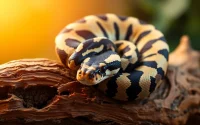Charming Bengal Kittens for Sale: Find Your Perfect Feline Friend
1. Understanding Bengal Kittens
1.1 What Makes Bengal Kittens Unique
Bengal kittens are known for their distinctive spotted or marbled coat, reminiscent of the wild Asian leopard cat, their ancestor. This unique appearance, combined with an affectionate disposition, sets them apart from other domestic breeds. Bengals possess an exotic allure, characterized by their striking patterns and vibrant colors. Whether they are the classic brown with black rosettes or the stunning snow variants, their coats are a significant draw for potential owners. Furthermore, Bengal kittens are famous for their high energy levels and playful nature. They’re curious explorers, often described as having a dog-like personality in their eagerness to interact with their human companions.
1.2 Characteristics and Temperament
The temperament of Bengal kittens is one of their most appealing traits. They are highly social and require regular interaction with humans and other pets to thrive. Bengals tend to be confident and assertive, making them both entertaining and challenging companions. Their playful nature means engaging them with interactive toys and activities is crucial. Moreover, Bengals are known for their intelligence; they often learn tricks easily and enjoy puzzle toys that stimulate their minds.
It’s essential to provide them with plenty of enrichment, such as climbing trees, scratching posts, and interactive playtime, to keep them happy and healthy. Bengals can also exhibit a certain degree of vocalization, with their charming chirps and meows adding to their lively personality. As a breed, they often thrive in homes where they have ample room to roam and explore.
1.3 History of the Bengal Breed
The Bengal breed has a fascinating history that dates back to the 1980s, when Jean Mill, an American breeder, sought to create a domestic cat that embodied the wild appearance of the Asian leopard cat but with a gentle temperament suitable for companions. Through careful breeding practices, she produced the first litters of Bengal kittens, which showcased striking coat patterns while retaining the loving nature of domestic cats.
This hybrid breed quickly gained popularity due to its unique looks and playful personality. With their wild appearance and friendly disposition, Bengals quickly turned heads in the cat community. Official recognition by cat registries came later, with the International Cat Association (TICA) granting full recognition to the breed in 1986. Bengals still retain their wild heritage, and responsible breeding practices are crucial to ensure their health, temperament, and longevity.
2. Where to Find Bengal Kittens for Sale
2.1 Popular Breeders Across the USA
Finding reputable breeders is crucial for ensuring the health and well-being of Bengal kittens. Top breeders across the USA prioritize genetic integrity and the health of their kittens, producing litters that meet breed standards while fostering the distinctive temperament Bengal enthusiasts cherish. For instance, you can find wonderful Bengal kittens for sale at places like Bengal Kittens for Sale, a site dedicated to connecting prospective owners with responsible breeders.
When searching for a breeder, it’s essential to consider their reputation, the conditions in which the kittens are raised, and the socialization practices implemented. Established breeders often have waiting lists, reflecting their commitment to quality over quantity. They provide health guarantees, vaccinations, and detailed background information about each kitten, further ensuring that new owners receive a healthy companion.
2.2 Online Marketplaces and Classifieds
Aside from private breeders, online marketplaces offer avenues to find Bengal kittens for sale. Websites like Petfinder and Adopt-a-Pet regularly feature listings from reputable breeders and shelters. While these platforms can be effective, potential owners should exercise caution and due diligence. It is essential to research the seller thoroughly and request references or reviews from prior buyers. Video calls or in-person visits to gauge the kitten’s living conditions and general health can provide additional peace of mind.
Beware of deals that seem too good to be true. Legitimate breeders will usually price their Bengal kittens based on genetics and breeding history, often ranging from $1,000 to $3,000. Suspiciously low prices may indicate unethical breeding practices or poor kitten health, which can lead to higher veterinary costs down the line.
2.3 Local Shelters and Rescues
For those wishing to provide a forever home to a Bengal kitten, local shelters and rescue organizations can sometimes have Bengal or Bengal-mix kittens available for adoption. Many shelters have volunteer teams familiar with breed identification and behavior, increasing the chances of finding the perfect match. Rescued Bengals often have unique backgrounds but can be equally affectionate and playful companions.
Adopting from a shelter not only alleviates animal overpopulation but may also come with lower costs and included initial health care services, such as vaccinations and spaying/neutering. It’s a fulfilling option for potential pet owners looking to make a difference in an animal’s life while welcoming a charming Bengal into their home.
3. Factors Affecting Bengal Kitten Prices
3.1 Genetics and Pedigree Considerations
The price of Bengal kittens usually reflects their genetics and pedigree. Kittens from high-quality bloodlines with title-holding champion ancestors tend to cost more than those from less distinguished lines. Breeders invest considerable effort and resources in maintaining the genetic health of their cats, ensuring they conform to breed standards.
Potential owners should inquire about the lineage documentation, as pedigree certification can impact the animal’s value. Understandably, breeding practices also affect price; Bengal kittens bred responsibly and ethically often come at a premium to ensure they are free from genetic disorders prevalent in the breed.
3.2 Color Patterns and Markings
The visual appeal of Bengal kittens plays a substantial role in determining their price. The breed features various color patterns, including spotted, marbled, and clouded designs, as well as different colors such as brown, silver, and snow. Bengals with unique and intricate patterns usually command higher prices due to their rarity.
Standard colors, such as brown with black markings, may be less expensive than more exotic options like the snow or silver variations. Additionally, kittens with highly pronounced, symmetrical patterns, which are visually striking, often achieve higher valuations in the market.
3.3 Health Guarantees and Care Packages
Responsible breeders provide health guarantees for their Bengal kittens. Such guarantees can cover congenital defects or serious illnesses discovered shortly after adoption, which can impact the purchase price. Furthermore, reputable breeders often offer starter kits that include essential items such as vaccines, microchipping, and a health record—additional services that may raise the initial price of a kitten but ultimately provide reassurance and value to potential owners.
Investing in a kitten from a respected breeder with a solid health guarantee is prudent, as it lessens the likelihood of unexpected veterinary costs and ensures the kitten has been cared for properly from a young age.
4. Preparing for Your New Bengal Kitten
4.1 Essential Supplies and Equipment
Before bringing home a new Bengal kitten, preparation is vital. Ensure you have the necessary supplies to create a comfortable environment, including a litter box, quality cat litter, food and water dishes, premium kitten food, toys, scratching posts, and a comfortable bed. Bengals are particularly fond of climbing, so investing in a cat tree or shelves can provide ample entertainment and enrichment.
When selecting food, it’s crucial to consider high-protein diets suitable for their energetic nature. Discuss with your veterinarian to find the right nutrition plan tailored to the specific needs of your Bengal kitten.
4.2 Household Adjustments for a New Pet
Adjusting your home for a Bengal kitten doesn’t mean extensive renovations; however, it does involve certain considerations. Discuss potential hazards, such as open windows, toxic plants, or electrical cords, as Bengals are curious creatures and love to explore. Investing in window screens can prevent escape and ensure their safety on your home’s upper levels.
Additionally, set up a designated area where your kitten can explore and feel secure, giving them their own space as they acclimate to their new environment. This zone can be a cozy corner with their bed, toys, and litter box, fostering a sense of stability.
4.3 Ensuring a Safe Environment
A safe environment is paramount for all kittens, especially energetic breeds like Bengals. Inspect your home for any potential dangers, such as small objects that could be swallowed, household chemicals, or accessible garbage cans. Use childproof lids on cabinets containing hazardous materials, and store harmful chemicals out of reach.
Provide vertical spaces, like shelves or tall cat trees, where your Bengal can climb and feel secure. This satisfies their instinct to observe their surroundings from a height while providing ample exercise opportunities. Regularly check that toys and resting areas are safe and clean, promoting a healthy lifestyle.
5. Caring for Your Bengal Kitten
5.1 Nutrition and Dietary Needs
Nutritional needs for Bengal kittens evolve as they grow, necessitating a well-balanced diet rich in proteins and appropriate fats. High-quality commercial kitten food specifically formulated to meet their developmental needs is recommended.
Consider feeding your Bengal smaller, more frequent meals to accommodate the higher metabolism that comes with their active lifestyle. Consulting with a veterinarian for tailored dietary advice is always wise, particularly as your Bengal matures. Ensure that clean, fresh water is always available, encouraging hydration, especially if dry kibble is the primary diet.
5.2 Training and Socialization Tips
Training a Bengal kitten can be both rewarding and entertaining. Due to their intelligence and eagerness to please, Bengals can learn basic commands and tricks relatively effortlessly. Using positive reinforcement techniques, such as treats and praise, can further motivate them.
Socialization is equally essential. Introducing your kitten to different environments, people, and pets will help them become well-adjusted adults. Start as soon as they arrive home, exposing them to various sounds, experiences, and gentle interactions. Early socialization will help reduce anxiety and build confidence, setting the foundation for an engaging and loving adult companion.
5.3 Regular Health Checks and Vet Visits
Routine veterinary care is essential for the overall health of your Bengal kitten. Scheduling initial vet visits can help establish a vaccination program while also identifying potential health issues early.
Regular health checks should include discussions about diet, behavior, and development milestones. It’s crucial also to discuss common breed-specific health concerns, like potential cardiac issues or renal disease, ensuring appropriate preventive measures can be taken. Keeping preventative care and vaccinations up-to-date can help guarantee a longer, healthier life for your Bengal kitten.


